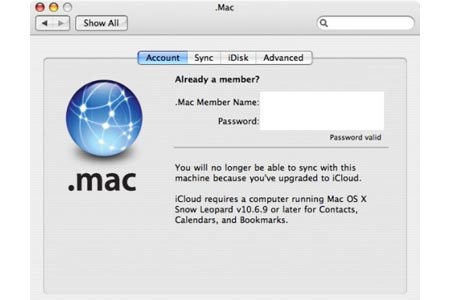Yes…all of us Apple devices addicts, we are excited about the iPhone4S release. I have already pre-ordered my new little device…I am a gadget freak. I think I am going to give Sarah (the wife) my iPhone4. I ordered the white version so we can distinguish the two. But, here is where Apple has me pinned…and what makes Steve Jobs a brilliant business man and entrepreneur.
My iPhone4S probably, maybe will not integrate with my Contacts and Final Cut Pro workflow. You are saying what? Well, if you are a video professional like me, you will read more!
So here are the Apple Products I use:
1) MacBook Pro 15″ purchased this summer (2011) with Snow Leopard (10.6.8)
2) MacPro from 2009 with Snow Leopard (10.6.8)
3) iPhone4
4) iPad 3G (First Generation)
5) Final Cut Pro 6.0.6
6) MobileMe (Sync Contacts & Other Preferences)
So the two things that are messing me up with this new upgrade to the iPhone4S, the fact it will be delivered the same day the iCloud product is released, which will also replace my MobileMe account. In order to use iCloud, the service that will now replace MobileMe account which syncs my contacts between devices…I have to use the new operating system on my Mac Computers, know as Lion (10.7). Yes…I would have to upgrade my operating systems on both computers if I want my contacts to sync between devices using my Address Book app on these devices…Apple’s preferred and default application for contacts.
To most of you…that is a no brainer! Just upgrade and be done with it. Right? NO!
I also use FinalCut Pro 6.0.6 which can only run on the operating system Snow Leopard (10.6.8) and all subsequent operating systems. This is a big deal. Apple has released the new Final Cut X for the new operating system Lion (10.7). BUT, it is 1/4th the original price and is not a professional grade video editing system (NLE). I cannot up-convert years and years….thousands and thousands of dollars of production to the new Final Cut X. Many think this is Apple’s push to get out of the professional editing business and focus on the pro-sumer and consumer. If you want to read the detailed review of Final Cut Pro X…here is a GREAT REVIEW! CLICK HERE to read why upgrading to Final Cut X is not a solution to professionals like me.
Now I also edit using Avid Media Composer for heavy compositing and 3D editing…but not for basic video workflows. Plus, we are waiting for Avid to release the new Avid Media Composer for Lion (10.7). It takes a while for this high end, hollywood video editing solution to test and release the newest version. They are waiting for the quarks in Lion (10.7) to get worked out.
So…for those video professionals who want a iPhone4S, use FinalCut Pro 6.0.6 (professional standard), and sync contacts in Address Book…here is what I have found as a solution:
1) Apple is apparently going to release a new Snow Leopard update (10.6.9) which will integrate with iCloud, so we can utilize the limited capabilities of syncing between devices.
2) Run a dual-boot system where you partition your Mac’s to run:
– Partition One – Lion (10.7) for basic computer solutions and syncing with iCloud
– Partition Two – Snow Leopard (10.6.x) for video editing solutions with FinalCut Pro or Avid products.
Here is an an article showing how some believe there is a Snow Leopard 10.6.9 update on the way that will integrate with iCloud: CLICK HERE for the article.
So…I am in limbo. Yes…waiting for October 14th. This is the day when my new iPhone4S should arrive, the day iCloud should be released, and hopefully the day when the new Snow Leopard (10.6.9) should be released. We will see. I have some serious decisions to make based on the events of the next week for business workflow and video production workflow.
OK…for all you Droid people out there who are saying the “open” platform…I hear ya. I do run my business off Google Apps including business class email, documents, and calendars. BUT, I do not really like the Droid based products and the platform. Plus…there are many articles this is not really an open platform. To me, the Android user interface is not for me and not what I consider intuitive for my needs. Plus…I have way too much money invested in my current workflow and technology.
So why does this conundrum make Steve Jobs and Apple such a wonderful brand story? Because, their business practices have me in this dedicated conundrum and internal debate. Because…I love the products, willing to pay for the technology, and find enough value in the Apple solutions to research how to make these products work for me. That is why millions of other production professionals like me will continue to invest in these products. We want the newest Apple gadget and willing to pay the financial price and the integration issues to have these gadgets.
Let the waiting game begin…off to the Apple Forums and discussion boards.




